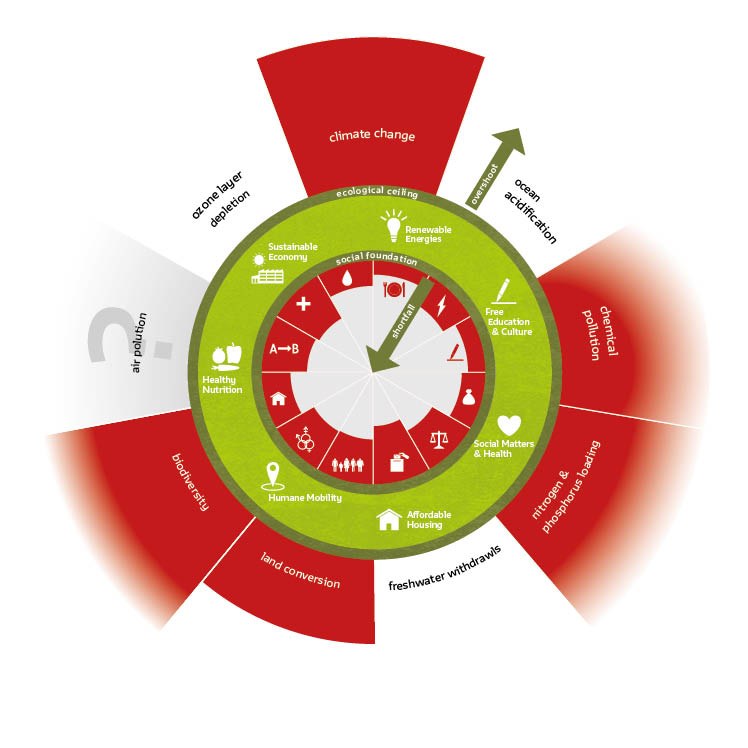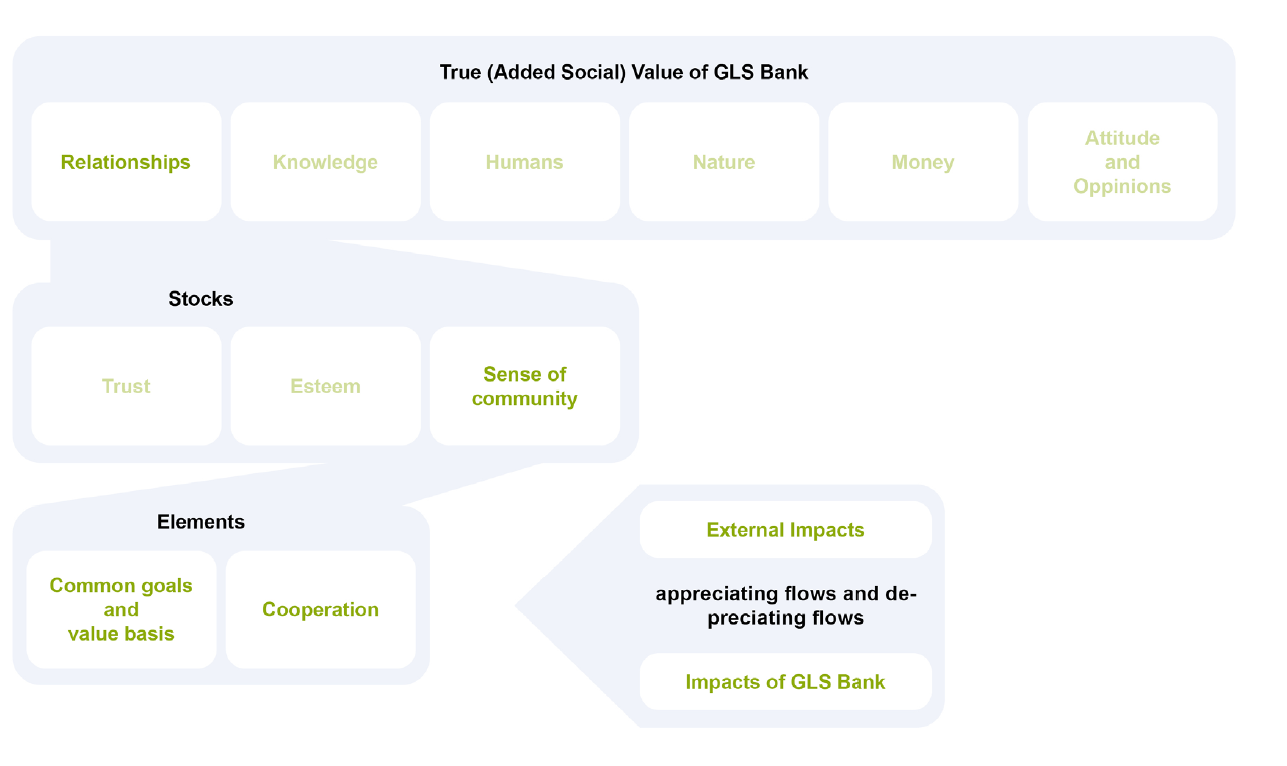Status quo: Environment, social issues and corporate governance (ESG)
Sustainability reports can be an effective, controlling, inspiring and honest instrument for steering and accountability in regard to socio-ecological aspects. However, in practice they often are not. Companies that issue sustainability reports use ESG performance numbers and in the best case present the improvement of these numbers in time – the so-called ESG-progress. These are supported by qualitative descriptions of measures, management systems and such. These include how people are handled, environmental topics, diversity, and a good corporate governance.
But what does this form of sustainability communication express? Is a reduction of CO2-emissions enough to do business compatible with the 1.5° limit? Are guidelines and internal examination procedures enough to really prevent human rights violations? Not at all.
Sustainability reporting in context
The boundaries of our planet are non-negotiable, they are the natural laws and foundation of life for all. Only if we actively use them as an indicator, sustainability reports can tell an honest story and help us stabilize the system earth.
To present a company’s contribution towards a sustainable development we must clearly define the planetary boundaries like 1.5°C compatibility and social target conditions like human rights. These help companies measure whether they do business within those boundaries or not. In technical jargon this is called contextualization.

